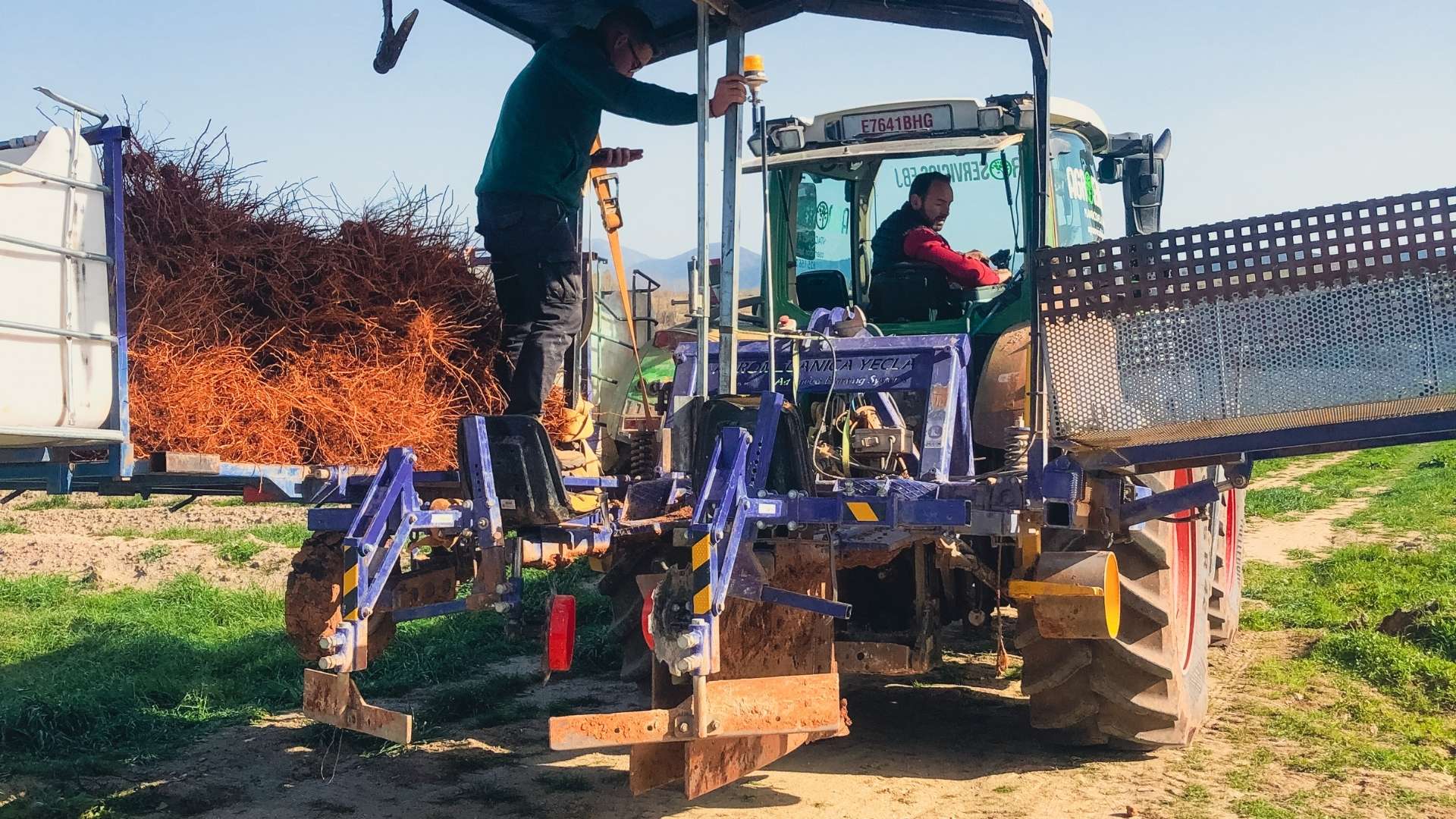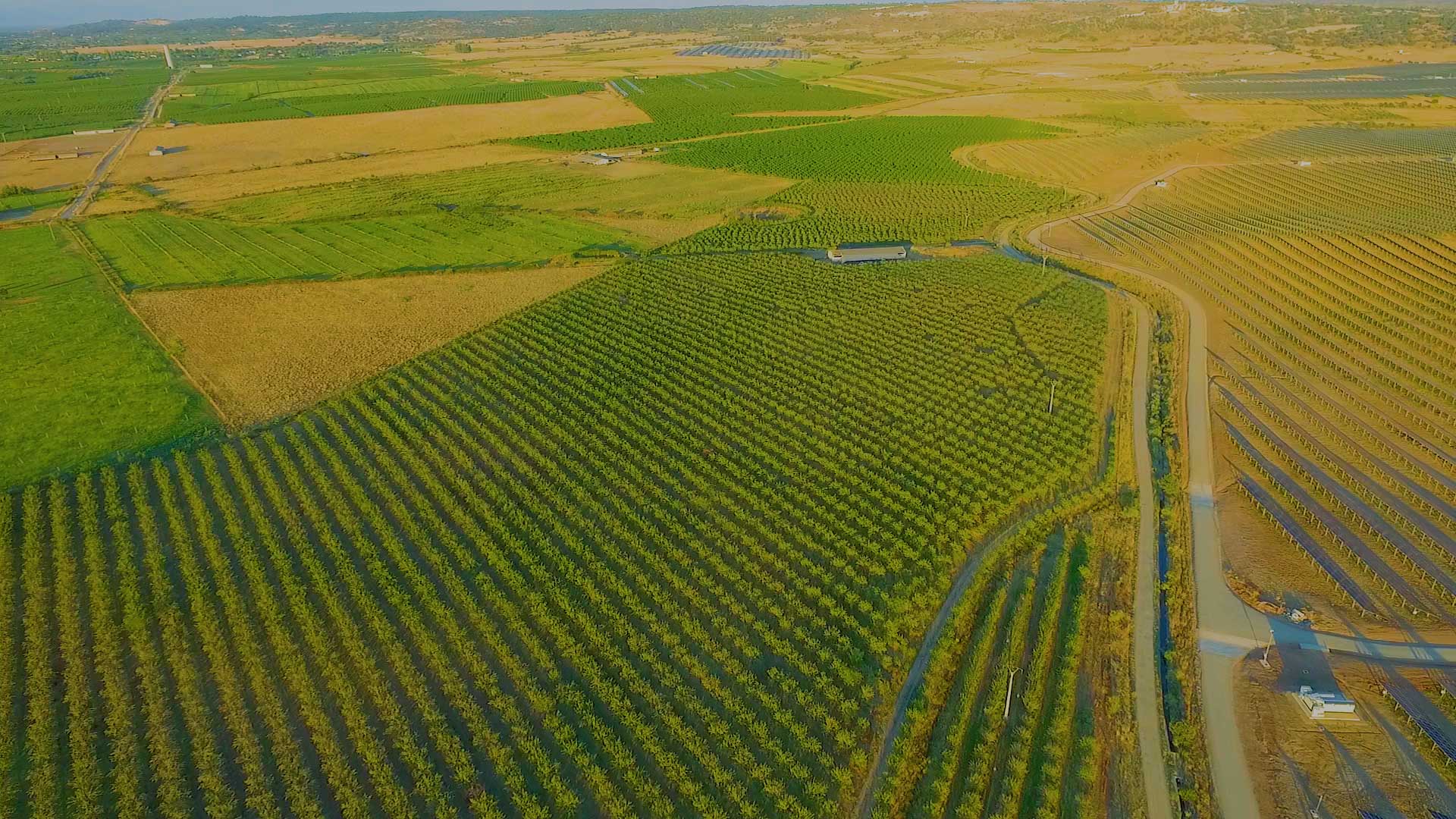Modern farm management relies heavily on irrigation systems to maximize crop quality and production. As a result, agricultural irrigation systems enable some of the most prolific crop-growing regions to prosper. Agro Invest Spain is committed to revolutionizing modern farming to enhance sustainable agriculture methods and provide our clients with a rewarding agricultural investment. Let’s examine agricultural irrigation systems and discuss the role of irrigation in almond cultivation and why producers and investors should consider managing water responsibly.
What is an Agricultural Irrigation System?
The act of irrigation is the artificial transfer of moisture to support crop growth. On the other hand, dryland farming, also referred to as rainfed farming, is the practice of cultivating land without irrigation. Hence, agricultural irrigation systems are just farmers’ way of getting water from its source to their planted fields. Surface water sources like rivers, ponds, and lakes, and groundwater sources like aquifers, springs, and wells provide irrigation water.
Agricultural irrigation systems advanced in tandem with the development of agriculture and human civilization. The Jordan Valley, a region frequently referred to as the Cradle of Civilization, is where the earliest traces of irrigation systems can be found, dating back to 6000 B.C. Humans constructed historic dams, reservoirs, and intricate irrigation channel systems everywhere that civilization flourished. For example, the Aztecs in the Americas built miles of aqueduct systems to transport water to their farmed areas.
The Importance of Agricultural Irrigation Systems
Agriculture is essential to life and produces most of the world’s food. However, agriculture could only be sustained with irrigation in infrequent or irregular rainfall areas. Therefore, the irrigation system is an essential component comprising facilities and machinery that deliver water to pastureland or crops to enhance productivity. Irrigation also contributes to more constant food supplies, enabling farmers to plant crops regularly and ensure food security.
Let’s begin with the actual crops and soils. Based on their level of maturity and life cycle, each crop has different water requirements in terms of quantity and timing. In the meantime, the crops have access to water and nutrients for growth through the soil. A portion of every irrigation is always lost to evapotranspiration, runoff, or drainage below the depth of the crop’s roots. Therefore, employing the correct agricultural irrigation system for the crop type and land is vital to ensure maximum productivity. If you plan to invest in farmland, you want to be sure you have suitable agricultural irrigation systems in place.

Types of Agricultural Irrigation Systems
We can break down the agricultural irrigation systems employed in modern farming into five categories:
Surface Irrigation- Flood or Furrow
When a field or sections of it are submerged in water, this is known as flood irrigation. The earliest irrigation systems used by humankind were surface or flood systems. A rice field is a typical example since it will be submerged in water. Not because rice is incredibly thirsty, however. Flooding is a very effective way to prevent the rice from being choked by other weeds and plants.
Pipes and furrows are used in furrow irrigation to transport water over a field. The main pipe that draws water from a well descends a slope, and its discharges flow into furrows between rows of crops. Furrow irrigation is far less expensive and susceptible to evaporation and runoff but is becoming more effective because of computerized water management systems.
The only way furrow irrigation differs from flood irrigation is that the water is diverted away from the source using pipes or hoses.
Drip or Micro Irrigation
Water circulates through a system of pipes positioned on the ground adjacent to a plant’s root zone in a drip or micro-irrigation system. The water is delivered by emitters or micro-sprinkler heads that drip gradually. Drip irrigation systems use less water than other irrigation techniques because the water is provided precisely.
The pressure needed to operate drip or micro-irrigation systems is relatively low. They are, therefore, suitable for usage with low water pressure. Drip irrigation systems are still relatively new but growing swiftly, particularly in producing specialized crops like vegetables and fruits. However, due to clogged emitters, farmers in locations with high iron content should refrain from employing drip irrigation and micro-sprinkler systems.
Sprinkler Irrigation
Sprinkler irrigation systems use pressurized water systems to apply water through sprinkler heads. Pumps are used to create pressure, and fixed or portable sprinkler irrigation systems are both possible. Moreover, various nozzle and sprinkler head types are available, allowing for coverage and spray pattern flexibility.
Center Pivot Irrigation
Large sprinklers are used in pivot irrigation, which uses mechanical machinery that rotates around a central pivot point. Although it costs more and requires more labor, this irrigation method uses water more effectively. It is functional in more challenging terrain that isn’t ideal for leveling.
Sub-irrigation
Sub-irrigation is a technique for providing water to crops below the soil’s surface. Water can be applied using drip irrigation tape buried at the time of planting, a system of pipes and ditches, or even both. Despite not being used as frequently as other irrigation systems, sub-irrigation water systems are becoming increasingly popular because they don’t waste water and are simple to operate.
Almond Cultivation and Irrigation
Early spring, the summer, and occasionally the first few months of autumn are when almond trees require a lot of water. At the start of the growing season, low soil moisture is hazardous and may cause a significant decline in productivity. Also, many issues arise when almond trees are watered during or right before harvest. So, 3–4 days before the start of harvest, most farmers stop watering the trees. Yet, it has been discovered that failing to irrigate the trees after harvest results in fewer flowers and fewer fruit being set the following year. As a result, many farmers lightly irrigate their trees right after harvest.
Microjet irrigation and drip watering are frequently utilized in large commercial almond plantations. With these devices, a farmer can precisely track the soil’s moisture levels every day and implement effective fertigation or the injection of fertilizers through the irrigation system.
You’re in Expert Hands with Agro Invest Spain
Having robustness and versatility in the water supply greatly aids water management, productivity, and sustainability. Understanding a property’s hydrological reality and adapting irrigation plans, particularly considering the Extremadura region’s oscillations between wet and dry, are essential for prosperous farmland investing. After all, if sufficient, high-quality water can be guaranteed over the long term, land and crops will be more valuable.
With decades of expertise in the agricultural sector, we at Agro Invest Spain know that business success depends on knowledge and creativity. So, with the help of the most cutting-edge technology and our talented team, we create novel ways to enhance modern agriculture. For example, we know the best agricultural irrigation system for our Spanish farmlands and use these techniques to be kind to the environment. So, you’ve come to the right place if you want to invest in farmland but are concerned about farmland operations and other factors like irrigation systems. Agro Invest Spain offers all the solutions with our managed farmland investment model. So, if you are ready to buy land in Spain for an almond investment, get in touch with our committed advisors today.
All rights of this content prepared by Api Group Agro Inversiones SL (“API Group”) belong to API Group. These rights are protected and the partial or complete copying, reproduction, distribution, processing or use of the content in any way without permission and without reference will result in legal and criminal liability of individuals.

